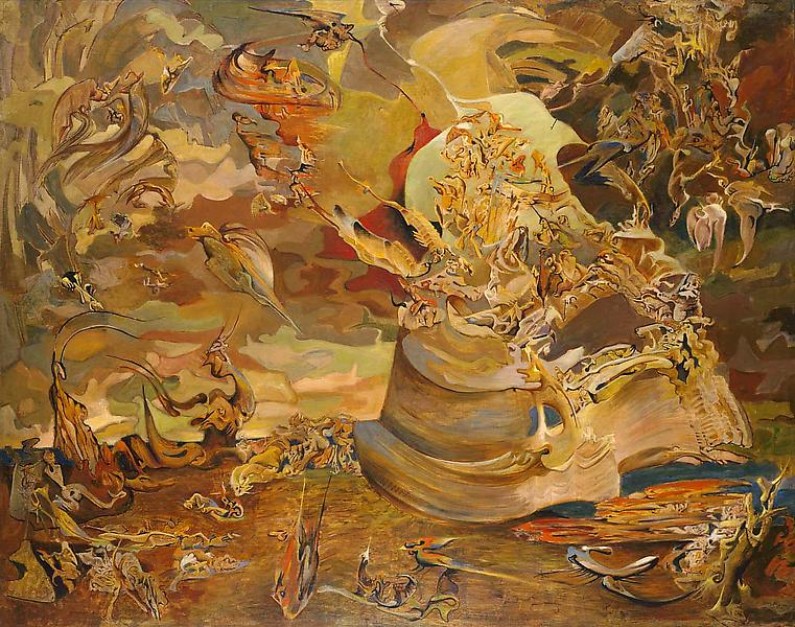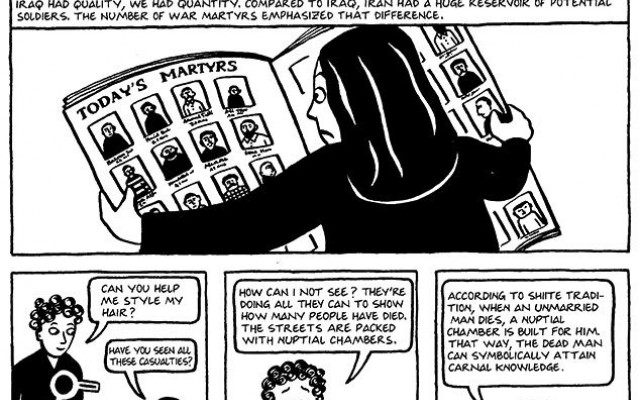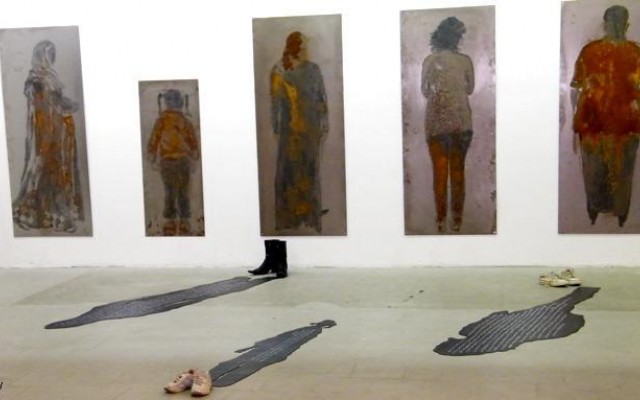Untranslatability: Ravens and Tigers and Camels, Oh My!

Current discussions about the discipline of Comparative Literature often consider the role of translation in the field and its relationship to the ongoing definition of a canon, or canons. Of foremost significance is what appears in translation; why does Vintage publish Suite Française, by Irène Némirovsky and translated by Sandra Smith, but not Meduse, by Giancarlo Pastore and translated by Jamie Richards as Jellyfish? Is it that a realist narrative depicting a familiar historical event (the flight from Nazi-occupied Paris) is surely more accessible to a US reading public—and therefore, ultimately, more profitable—than an experimental novel recounted by a neurotic, homosexual man and described by one Italian critic as “the testimony of a resentful, mournful reflection of the self and the world”? The existence of small publishing houses such as Xenos Books, which published Jellyfish in 2008, as well as others such as Dalkey Archive Press and Green Integer, promote the translation and publication of more marginal discourses into English that do not “translate” readily for the US marketplace, though the reading audience for these translations remains woefully small, primarily comprised of literary translators themselves, their friends, and academics.
In his essay “Traduction au sens large,” Yves Bonnefoy notes a phenomenon that is more or less opposite to that of Jellyfish at work with the reception of Edgar Allan Poe in France via Charles Baudelaire. “Le Corbeau” (“The Raven”) constituted, in his words, “an événement français” that altered the course of French literature, but even though almost every person who is the product of the US school system is familiar with “The Raven,” most American poets consider Poe’s verse to be mere doggerel.1 Astonishingly enough, this French “événement” was based upon renditions that the translators considered to be failures. Neither Baudelaire nor Stéphane Mallarmé believed that they were able to successfully produce the lugubrious effect which, according to Poe’s essay “The Philosophy of Composition,” the poet of Baltimore had so meticulously constructed upon the foundation of the sorrowful sound “ore” repeated, for instance, in the words “Lenore,” “shore,” “door,” and, of course, “nevermore.” This sound has no correspondence in the French language, and the translators could not rhyme the French translation of “nevermore” (“jamais plus”) with the name of the narrator’s dearly departed, Lenore. However, the eerie effect of repetition remains in the French translations, particularly the “jamais plus” that the raven answers in response to the narrator’s questions. For Bonnefoy, the raven’s “use” of language points to a semiotic crisis that the French were ready to address but that was entirely lost on the majority of Poe’s 19th-century compatriots.
The raven truly heralds non-sense, the nothingness of all, the advent of a night in which all hope fades; in any case, this new use of words efficiently participates in, may even have produced, this epiphany of (admittedly problematic) non-being, and with Edgar Poe poetry may have found the means to push the transgression of mythical knowledge to its decidedly unknown term, which we now know it needed to do…2
For Bonnefoy, the refrain of “Le Corbeau” is a sound issuing from beyond the realm of signification and, as such, leads to interrogations regarding the reliability of the linguistic sign, as here the signified of “nevermore”/“jamais plus” is nothing except what the narrator or reader makes of it, since the raven is only producing sounds that it has learned. For Bonnefoy, French readers were ready to question such systems—not just linguistic, but religious, relational, philosophical—but those in the United States were not.
Translatability, then, can be a question of ideology and poetics, as demonstrated by the example of Bonnefoy’s interpretation of the French reception of Poe. Ideology and poetics may also be linked to the interest of literary professionals, as illustrated by the instance of Suite Française and Jellyfish above. André Lefevere explores these dynamics in greater detail in Translation, Rewriting and the Manipulation of Literary Fame, in which he identifies the “professionals” as publishers, translators, editors, and educators. Together with the patrons of literature, the professionals determine which works become classics. Lefevere maintains that every literary system is comprised of ideology and poetics, which are subject to change; while Jellyfish may be of marginal status today, perhaps in one hundred years the literary landscape(s) will look so different that Pastore’s misanthropic, hypochondriac narrator will find himself alongside Hamlet and Meursault. For now, however, he remains on the foreign and queer margins, although the possibility of a multiplicity of canons, advocated for by Emily Apter in Against World Literature: On the Politics of Untranslatability, looks towards a model that would accommodate difference and differences and transcend a binary logic of classic vs. non-classic.
Thus far, this discussion of translatability has addressed works that are actually available in translation while considering whether they are “translatable,” in a more figurative sense, into a dominant discourse. Poe's poetics translated more easily into French, according to Bonnefoy; and Jellyfish, while available in an excellent translation in English, is far too radical to find a place alongside more traditional works, at least today. Lefevere discusses the possible interventions of translators that may make a foreign work less challenging to the target audience, as with the changes made by Anneliese Schütz to temper anti-German sentiments in Anne Frank’s diary when she produced her translation for the Fischer publishing house in Frankfurt am Main (1955). According to Lefevere, there are also texts that deviate so sharply from what is expected or acceptable that translators simply avoid the elements that they deem untranslatable.
Lefevere notes that “haiku” has become a household word, given its successful transition into Anglophone poetics. To a lesser extent, the Persian form of the roba’i, the quatrain employed by Omar Khayyam in the Rubáiyát, has also enjoyed some popularity among English-language writers, and this was the case especially among Edward FitzGerald’s contemporaries. However, just as many Americans regard Poe as second-rate, so do readers of Farsi and Arabic consider the roba’i to be an inferior form, particularly in comparison to the epic genre of the qasidah, which has existed for approximately one and a half centuries. The reason that the qasidah remains unknown to Anglophone readers, Lefevere argues, is because the form is too alien to the standards of English language poetry. Lefevere states that “no rewriter has, as yet, found a ‘slot’ in Euro-American poetics to fit the qasidah” (Lefevere 75). Western readers have trouble with a form which, frequently relying upon audience participation, may seem chaotic because its narrative is not sequential; with a narrative tradition that devotes far more lines to the praise of camels than of women; and with a rhyme scheme that may have 50–100 verses (comprised of two half-lines) end with the same sound. According to Lefevere, the translators of the qasidah have altered the structure to better fit Western standards, have abbreviated the passages dedicated to camels, and abandoned the rhyme scheme altogether. Despite translators’ efforts to render the qasidah more palatable to Western tastes, no amount of domestication thus far has been able to reconcile the disparities between the different literary systems. The poetics and the ideologies of the qasidah have, thus far, proven to be untranslatable into English.
One translator of the qasidah form, W.R. Polk, introduced photographs to accompany his version of Labid Ibn Rabiah’s The Golden Ode in an “attempt to capture the mood presented in each verse” (Polk cited in Lefevere 86). While many elements of the qasidah may have posed great challenges in terms of interlinguistic translation, Polk found some recourse in what Roman Jakobson defined as “intersemiotic translation,” or the transmutation of meaning from one medium to another. Lefevere is primarily concerned with the untranslatability of ideology and poetics, the main components of what he refers to as literary systems, and how an untranslatable status may change over time. Additionally, the untranslatability of poetics may be related to differences in languages themselves; as mentioned above, both Baudelaire and Mallarmé lamented their inability to reproduce the sonority of Poe’s “The Raven” in French. Baudelaire chose to render the poem in a prose form, refusing to acquiesce to a “singerie rimée.” Mallarmé likewise found it impossible to successfully translate the sound of “The Raven” but, as Polk supplemented what was “lost” in translation with photographs to accompany The Golden Ode, the 1875 edition of Mallarmé's “Le Corbeau,” published by Richard Lesclide, provides illustrations by Édouard Manet so that the haunting nature of the original’s musicality takes on a different, visual form in one of its French versions.
In “On Linguistic Aspects of Translation,” Jakobson notes that poetry is often untranslatable, but that the translator can attempt to render poetry through creative transposition. This transposition, Jakobson writes, can be intralingual, interlingual, or intersemiotic, the latter involving the transposition “from one system of signs into another, e.g., from verbal art into music, dance, cinema, or painting” (Jakobson 118). By acknowledging the impossibility of translating Poe’s musicality into French, Mallarmé broke with a domesticating tradition of translation that prevailed during the first half of the 19th century and allied himself with a foreignizing tradition. A more domesticating approach would have found a way to render “The Raven” in a more traditional French poetic form, such as the alexandrine, and it is unlikely that such a rendition would have been the “événement” that Bonnefoy identified.
Foreignizing translations often involve different levels of linguistic experimentation, though innovative techniques may also call upon other arts to more effectively convey elements of the source text. In “Translation as Illustration: The Visual Paradigm in Mallarmé’s Translations of Poe,” Dominique Jullien discusses the increasing preference for foreignizing translations over the course of the 19th century and the role that pronounced interarts relations played vis-à-vis this foreignizing principle. For example, “Leconte de Lisle’s translations of ancient Greek texts were praised by critic Remy de Gourmont for their colorfulness” and “The pleasure the reader gets from Leconte de Lisle’s translation is a visual pleasure, one that ignites the reader’s imagination visuelle’” (Jullien 6). The Lesclide edition of “Le Corbeau” demonstrates, Jullien explains, the mechanism of “failure and compensation” (ibid 4), whereby Manet’s illustrations compensate visually for what the translation cannot render phonically.
While certain elements may get “lost” in translation, others may be “found,” and sometimes, as in the case of the Lesclide edition of Mallarmé’s “Le Corbeau,” this compensation may take place at an intersemiotic level. In particular, when form and meaning are interconnected, the specific features of individual languages may thwart easy the pun as the untranslatable phenomenon par excellence, since its very definition is a play on language, and that play is specific to the language in which it originates. He does not provide any examples for his proposed solution, that of “creative transposition,” concluding the essay by wondering how it would be possible to conserve the word play of the Italian epigram “Traduttore, traditore.” The fact that he leaves this unresolved serves as a reminder that the untranslatable, rather than closing the doors of communication, actually invites innovation. What about a neologism, such as betraynslation, treasonlation, or translating, treasoning? These offhand examples serve to illustrate the dynamics that Suzanne Jill Levine identifies within the process of the translation of paronomasia: the process may underscore the differences between languages, but resolving the translation problem can bring them back together. On the one hand, the violence to the source text (to borrow Berman’s terminology in characterizing the process of interpretation, comparable to what Steiner refers to as “aggression”), breaking it apart before the translator can piece it together again, also takes place in the receiving situation. The translation destroys words from the source language and destroys or stretches words in the target language, makes them strange, as in the case of “betraynslation.” At the same time, the neologism makes the underlying relationships between the languages more apparent, drawing attention to the etymological features shared by Italian and English. The example translating, treasoning? also presents other possibilities, such as the fact that treason and reason rhyme; a new factor, that of the logic of betrayal and of translation, or the rationale, enters into the equation. The translation of a pun “lays bare a potential of the original text in another language” (Levine 15) and as such enriches the original meaning while simultaneously enriching the receiving language.
In Levine’s discussion of how to translate the title of Guillermo Carbrera Infante’s Tres tristes tigres, the first three words of a tongue-twister, she notes the added, felicitous dimension of the title that she ultimately chose for the English version, Three Trapped Tigers. She cites an excerpt from a letter she received from Infante in which he notes that the original Spanish title is based on a phrase that “has lost its meaning by senseless repetition like jingles or swear words” (cited by Levine 28). Like the raven's “nevermore,” these “three trapped tigers” are the sounds of nothingness, of words that have broken away from their referents. Levine was able to reproduce the tongue twister into English while simultaneously finding an alternative to “tristes” that explains, in part, why these tigers (referring to the male protagonists of the novel) are sad: because they “are caught in language’s emptiness, a ‘sound and fury signifying nothing’” (Levine 29). Here, as with Mallarmé, where there is failure there is also compensation, and this compensation further performs this “task” of translation identified by Benjamin, that of serving “the purpose of expressing the central reciprocal relationship between languages” (Benjamin 17).
Lefevere noted that ideologies and poetics change, and so do these relationships among languages. While the choices of individual translators will provide countless interpretations of the same text, so too will readers respond differently to the same text depending upon their time, their place, their politics. For this reason, translation is an ongoing process, and simultaneously a model for, and accessory to, critical inquiry. Rather than fetishizing difference, the recognition of the untranslatable as such acknowledges that the task of the (un)translator is never done. As the entry for “untranslatable” in Barbara Cassin’s Dictionnaire des intraduisibles reads: “the untranslatable is not something that one cannot translate but something one never stops (not) translating.”3
1. For extensive treatment of this subject, see Patrick Quinn’s The French Face of Edgar Poe. The author himself expresses an “entirely lukewarm appreciation of Poe’s writings” (Quinn 4).
2. Translation my own, from “Le corbeau annonce-t-il vraiment le néant du tout, le non-sens, l’avènement d’une nuit au sein de laquelle tout ésperance s’efface, en tout cas ce nouvel emploi des mots collabore efficacement à cette épiphanie du non-être, aussi problématique soit celui-ci, on peut même penser qu’il l’a produite, et que la poésie a découvert avec Edgar Poe le moyen de pousser jusqu’à son terme assurément inconnu une transgression des savoirs mythiques que l’on comprend maintenant qu’elle a besoin d’accomplir…” (Bonnefoy 2008, 16)
3. Cited by Spivak 38.
Benjamin, Walter, Hannah Arendt, and Harry Zohn. “The Task of the Translator” in The Translation Studies Reader. Edited by Lawrence Venuti. London: Routledge, 2000, pp. 15-25.
Bonnefoy, Yves. “La Traduction au sens large: A Propos d'Edgar Poe et de ses traducteurs.” Littérature 150 (2008): 9-24.
Jakobson, Roman. “On Linguistic Aspects of Translation,” in The Translation Studies Reader. Edited by Lawrence Venuti. London: Routledge, 2000, pp. 113-118.
Jullien, Dominique. “Translation as Illustration: The Visual Paradigm in Mallarmé’s Translations of Poe.” Forthcoming in Word & Image: A Journal of Verbal/Visual Enquiry.
Lefevere, André. Translation, Rewriting, and the Manipulation of Literary Fame. London/New York: Routledge, 1992.
Levine, Suzanne Jill. The Subversive Scribe: Translating Latin American Fiction. Saint Paul, MN: Graywolf, 1991.
Quinn, Patrick. The French Face of Edgar Poe. Carbondale: Southern Illinois University Press, 1957.
Spivak, Gayatri. “Translating in a World of Languages.” Profession 2010, pp. 35-43.




